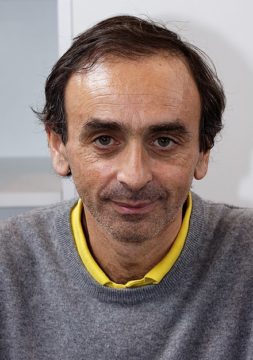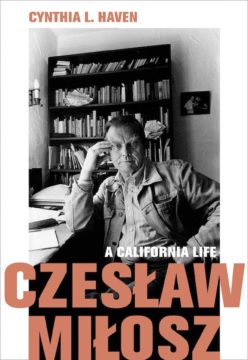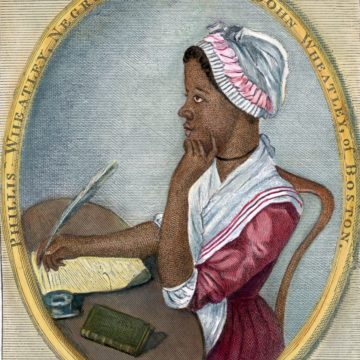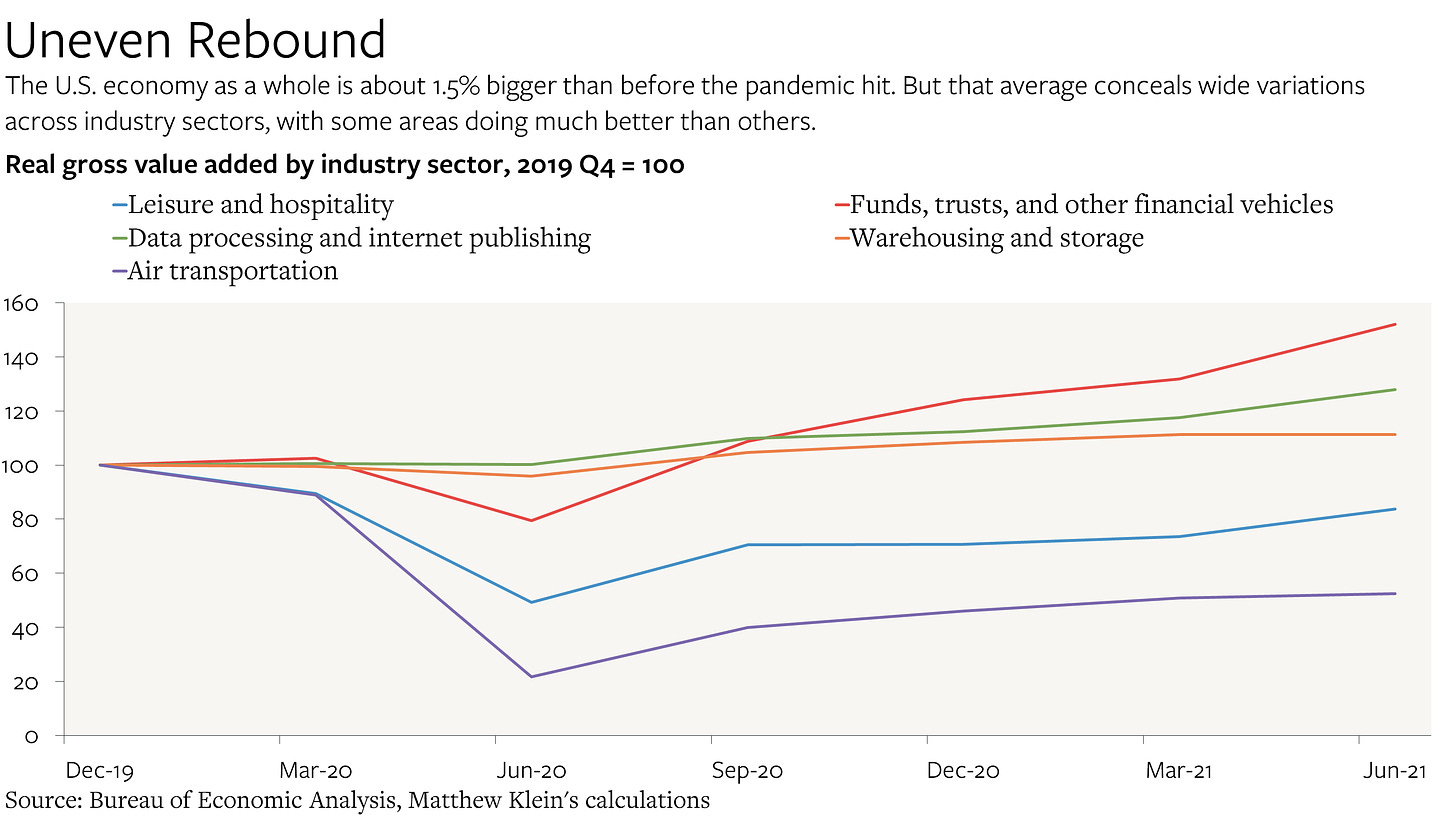Category: Recommended Reading
Dean Stockwell (1936 – 2021) actor
Sunday Poem
Taos Mountain
“Though the mountains fall into the sea”
describes the faith of some, but the mountains do not move
whatever we say, whatever saints and shamans do.
It is their indifference to us that makes them sacred.
On the edge of this flat town, beyond the pueblo,
the black mountain rises, a reference point
to every human moment, utterly silent.
No one climbs this mountain, there are no trails,
because the place is holy: it does not exist to serve us,
it is not meant to please us, it simply is,
and in this way it is a god.
Mountains do not move, and that is their mountainness.
Geologists can say they have moved over time,
but not in human time. This mountain outside my window
has always been there: when the pueblo was built,
when the Spanish came and were driven away,
when the missionaries returned, then Americans and Apache.
The mountain abides. That is its power
in imagination and worship. Were it to respond
to our prayers and dances it would cease to be itself.
Its silence is what we listen to, and the reason
it is a source of strength. I will not pretend
it whispers secrets to me or that I have pleased it.
The mountain is black even in sunlight or capped with snow.
It may have its back turned to the human
like an inscrutable mother in a shawl.
There are no signs given us to read
and any language to describe it is our own.
The fact of the mountain is our bare and only creed.
by Stephan Hollaway
from The Ecotheo Review
Saturday, November 13, 2021
The Zemmour Effect
 Adam Shatz in the LRB’s blog:
Adam Shatz in the LRB’s blog:
‘The American writer in the middle of the 20th century has his hands full in trying to understand, describe, and then make credible much of the American reality,’ Philip Roth wrote in Commentary in 1961. ‘It stupefies, it sickens, it infuriates, and finally it is even a kind of embarrassment to one’s own meagre imagination. The actuality is continually outdoing our talents, and the culture tosses up figures almost daily that are the envy of any novelist.’
When Donald Trump was elected president, many people were struck by the eery prescience of Roth’s 2004 novel The Plot Against America, an alternative history in which the right-wing isolationist Charles Lindbergh defeats Franklin Roosevelt in the 1940 presidential election, imposing a reign of terror. But the Roth of 1961 had it right. Trump provided a humbling reminder that fiction is no match for what Roth called ‘the American berserk’.
America is hardly alone. The most hysterical – and also the most articulate, and therefore dangerous – manifestation of what might be called the French berserk is the journalist and potential presidential contender Éric Zemmour. His emergence has thrown into relief the ‘meagre imagination’ even of Michel Houellebecq, whose 2015 novel Soumission told the story of a Muslim businessman of Tunisian origin who becomes France’s president and imposes sharia. The reality is no less wild: the rise of a North African Jewish intellectual who calls for the rehabilitation of Pétain and Vichy, while depicting immigrants and Islam as mortal threats to the Republic.
More here.
Growth Towns
 Ho-fung Hung in Phenomenal World:
Ho-fung Hung in Phenomenal World:
The ongoing crisis for Chinese property developer Evergrande has made the giant company the focal point of global concern. Creditors, investors, contractors, customers, and employees of Evergrande within and outside China have watched anxiously to see whether the Chinese government would decide that Evergrande was too big to fail. If Evergrande were to collapse, the repercussions for both the financial system and construction supply chains are impossible to predict. Reportedly, the central government in Beijing has issued a warning to local governments to brace for the possible social and political fallout.
Even if Evergrande were salvaged through government intervention, the Chinese state would continue to face new dilemmas. Evergrande is just one of many troubled property development firms that face potential default. As housing prices in China fall, the crisis has already spread to other property developers, such as Kaisa. The US Federal Reserve explicitly warned that China’s housing crisis could spill over to the US and global economy.
The crisis of Evergrande and China’s large property sector is a manifestation of the crisis of China’s growth model. The limits of that model can be seen in ghost towns across the country; China’s empty apartments are estimated to be able to house the entire population of France, Germany, Italy, the UK, or Canada. How could such development sustain high-speed growth for so long, and why has it failed now? To understand the ongoing crisis, we need to understand how property—and fixed investment more broadly—is connected to other moving parts of the Chinese and global economies.
More here.
What’s Happening With the U.S. Economy?
Matthew Klein and Cardiff Garcia over at Klein’s Substack:
Last week I had the chance to collaborate with longtime friend and former colleague Cardiff Garcia by appearing as the guest on The New Bazaar podcast. I encourage you to listen to the whole thing using your preferred platform.
We had a lot of fun and we covered a ton of ground. (We also recorded the podcast on November 4, which means that we didn’t have the October jobs or inflation data yet.) But while we kept our conversation as grounded as possible, there were a lot of numbers getting thrown around. So we both thought that it would be helpful to provide a set of charts to help listeners follow along with our conversation.
There won’t be much text in this piece, but there will be lots of useful visualizations for anyone trying to understand what’s happening right now in the U.S. economy. The charts are presented in the order in which we covered each subject.
Are We Producing More than Before the Pandemic?
Yes! About 1.5% more in July-September 2021 than in October-December 2019, on a seasonally-adjusted basis. That’s pretty remarkable considering the death, devastation, and disruption that’s occurred since the end of 2019.
But these aggregate measures of production mask big differences across sectors. Businesses involved in cloud storage, asset management, retail brokerage, and warehousing have done phenomenally well, offsetting the continued depression in sectors such as leisure, hospitality, and passenger transportation.
More here.
Patricia Highsmith Lived Extravagantly, and Took Copious Notes
Dwight Garner at the New York Times:
 The future author of “Strangers on a Train,” the Ripley series and many other novels was learning to mediate between her intense appetite for work — few writers, these diaries make clear, had a stronger sense of vocation — and her need to lose herself in art, gin, music and warm bodies, most of them belonging to women.
The future author of “Strangers on a Train,” the Ripley series and many other novels was learning to mediate between her intense appetite for work — few writers, these diaries make clear, had a stronger sense of vocation — and her need to lose herself in art, gin, music and warm bodies, most of them belonging to women.
There are a lot of late-night taxi rides in these journals. And necking in restaurant bathrooms (a bonus for same-sex couples). And stealing kisses from married women. And running down to Chinatown to get tattoos. Highsmith’s first was her own initials in Greek lettering on her wrist, small, in green ink.
She was always half-broke. When you date women, she joked, there’s no man to grab the check. She liked to be out. If you are made nostalgic by the mention of defunct Manhattan bars and restaurants, this book will be like reading the liner notes to a Billie Holiday or Frank Sinatra album at midnight through a glass of bourbon.
more here.
On Jonathan Richman’s Song “Roadrunner.”
Alex Abramovich and Joshua Clover at the Paris Review:
 I didn’t choose “Roadrunner” because its recording timeline and its image of a person literally circulating through the night allowed me to discuss these things. I chose it because it’s magic. I have felt its magic for a long time but never had a good story about it. And because I couldn’t figure out a path to a book about “Tell Me Something Good,” a song at least as magical. That book goes “Something something—wait! Did you know that Chaka Khan got the name ‘Chaka’ when she joined the Black Panther Party for Self-Defense in Chicago?” And I am not sure I know how to tell that story in a way that does justice to Chaka, and Rufus, and the BPPSD, and Chairman Fred. So there I was with “Roadrunner.” And once I set out along Route 128, there was no way for me not to situate it within what is for me the true metanarrative of the U.S. present: the catastrophic trajectory of capitalism.
I didn’t choose “Roadrunner” because its recording timeline and its image of a person literally circulating through the night allowed me to discuss these things. I chose it because it’s magic. I have felt its magic for a long time but never had a good story about it. And because I couldn’t figure out a path to a book about “Tell Me Something Good,” a song at least as magical. That book goes “Something something—wait! Did you know that Chaka Khan got the name ‘Chaka’ when she joined the Black Panther Party for Self-Defense in Chicago?” And I am not sure I know how to tell that story in a way that does justice to Chaka, and Rufus, and the BPPSD, and Chairman Fred. So there I was with “Roadrunner.” And once I set out along Route 128, there was no way for me not to situate it within what is for me the true metanarrative of the U.S. present: the catastrophic trajectory of capitalism.
more here.
“Roadrunner” 1972
Let’s talk about Cecily Strong’s game-changing “clown abortion” skit
Aja Romano in Vox:
 There’s an idea, particularly popular with some comedians, that the very point of comedy is to say the unsayable, to push boundaries and envelopes by articulating uncomfortable truths. Dave Chappelle embodied this recently in his controversial Netflix comedy special The Closer, his sixth for the streaming giant in which he (once again) takes up the question of how we should treat trans people and concludes (once again) that the answer is “none too carefully.” Saying the presumably unsayable is often the milieu of male comics such as Joe Rogan (whose 2016 Netflix special was called Triggered) or Bill Burr (whose last special was titled Paper Tiger). For the most part, comedy titan Saturday Night Live has sidestepped that tendency, sticking to its long-running habit of doing straightforward comedic imitations and letting the real-life, absurdist politics speak for themselves under cover of parody — until this past weekend.
There’s an idea, particularly popular with some comedians, that the very point of comedy is to say the unsayable, to push boundaries and envelopes by articulating uncomfortable truths. Dave Chappelle embodied this recently in his controversial Netflix comedy special The Closer, his sixth for the streaming giant in which he (once again) takes up the question of how we should treat trans people and concludes (once again) that the answer is “none too carefully.” Saying the presumably unsayable is often the milieu of male comics such as Joe Rogan (whose 2016 Netflix special was called Triggered) or Bill Burr (whose last special was titled Paper Tiger). For the most part, comedy titan Saturday Night Live has sidestepped that tendency, sticking to its long-running habit of doing straightforward comedic imitations and letting the real-life, absurdist politics speak for themselves under cover of parody — until this past weekend.
Cast member Cecily Strong’s recent “clown abortion” sketch for “Weekend Update” — in which she plays “Goober the Clown,” a red-nose-wearing balloon-animal maker under pressure to discuss her abortion thanks to Texas’s debilitating ban on abortions after six weeks — may well go down as one of the starkest political critiques in the show’s recent history. What becomes clear over the course of the bit is that this may well be Strong’s own personal anecdote, too. As it’s related between clown gags, it’s a reminder that some things do go unsaid in American life, but they might not be the ones we hear the usual suspects yell about.
More here.
Anxiety cues found in the brain despite safe environment
From Medical Xpress:
 Imagine you are in a meadow picking flowers. You know that some flowers are safe, while others have a bee inside that will sting you. How would you react to this environment and, more importantly, how would your brain react? This is the scene in a virtual-reality environment used by researchers to understand the impact anxiety has on the brain and how brain regions interact with one another to shape behavior.
Imagine you are in a meadow picking flowers. You know that some flowers are safe, while others have a bee inside that will sting you. How would you react to this environment and, more importantly, how would your brain react? This is the scene in a virtual-reality environment used by researchers to understand the impact anxiety has on the brain and how brain regions interact with one another to shape behavior.
…Using fMRI, the researchers observed the brain activity of volunteers with general and social anxiety as they navigated a virtual reality game of picking flowers. Half of the meadow had flowers without bees, the other half had flowers with bees that would sting them—as simulated by a mild electrical stimulation to the hand. Researchers found all study participants could distinguish between the safe and dangerous areas, however, brain scans revealed volunteers with anxiety had increased insula and dorsomedial prefrontal cortex activation—indicating their brain was associating a known safe area to danger or threat. “This is the first time we’ve looked at discrimination learning in this way. We know what brain areas to look at, but this is the first time we show this concert of activity in such a complex ‘real-world-like’ environment,” said Suarez-Jimenez. “These findings point towards the need for treatments that focus on helping patients take back control of their body.”
More here.
Saturday Poem
Maizel at Shorty’s in Kendall
All shift them sugar donuts
been singing to me,
calling me something crazy in a voice
Dolly Parton’d be proud of— Maizel, honey,
eat us up! Like that.
Friendly. Nice and sweet, all
glazed up together in that box, as if they was
happy about being what they
is, surely more than this
jelly-junkie waitress hooked on
Krispy Kremes can say. Halve the moon,
leave a frosted crescent for some other girl.
Maizel, you ain’t kidding
no one, honey.
Of a certainty you’re gonna eat that yourself,
probably soon’s you get these BB-
Q
ribs to them boy’s at table
sixteen. Nice-looking boys, too.
These days we’re getting the,
uh, Cuban mostly,
virtually all what you call Hispanic-speaking.
White folks gone moved up to Broward County, like my
ex. Maizel, you shut
your mouth about that man! Sweet Gee-
zus, honey, ain’t this ring of sugar gold enough?
by Campbell McGrath
from Nouns & Verbs
Harper Collins, 2019
Friday, November 12, 2021
“A Home in the Neon Heat of Nature”: A New Biography of Czesław Miłosz
Cory Oldweiler in the Los Angeles Review of Books:
 The Polish poet Czesław Miłosz dubbed Dante “a patron saint of all poets in exile” and, as an exile himself for much of his life, likely could relate to both the Florentine’s proud defiance and his urge to seek some measure of solace in the constancy of the natural world. When, in 1960, Miłosz moved to the United States, accepting a teaching position at UC Berkeley, nature was very much on his mind. He was already living in exile, having defected to France nearly a decade earlier, but he had not escaped the haze of history that hung heavily over postwar Europe. The past was integral to Miłosz’s writing throughout his career, especially the horror he witnessed so viscerally in wartime Warsaw, but in order to continue to describe it “in such a manner that it is preserved in all its old tangle of good and evil, of despair and hope,” he had to soar above it, as he put it in 1980, after winning the Nobel Prize for Literature.
The Polish poet Czesław Miłosz dubbed Dante “a patron saint of all poets in exile” and, as an exile himself for much of his life, likely could relate to both the Florentine’s proud defiance and his urge to seek some measure of solace in the constancy of the natural world. When, in 1960, Miłosz moved to the United States, accepting a teaching position at UC Berkeley, nature was very much on his mind. He was already living in exile, having defected to France nearly a decade earlier, but he had not escaped the haze of history that hung heavily over postwar Europe. The past was integral to Miłosz’s writing throughout his career, especially the horror he witnessed so viscerally in wartime Warsaw, but in order to continue to describe it “in such a manner that it is preserved in all its old tangle of good and evil, of despair and hope,” he had to soar above it, as he put it in 1980, after winning the Nobel Prize for Literature.
Miłosz felt that the United States, specifically the American West, could provide that lofty vantage, that distance, that relative stability from the “demoniac doings of History.” He would live in the Golden State for 40 years, from 1960 to 2000, but according to Czeslaw Miłosz: A California Life, Cynthia Haven’s deeply considered new biography of the poet, Miłosz’s move to America was predicated on a fundamental error.
More here.
Scientists pinpoint the location and timing of memory formation in mice
Megan Molteni in Stat News:
 A mouse finds itself in a box it’s seen before; inside, its white walls are bright and clean. Then, a door opens. On the other side, a dark chamber awaits. The mouse should be afraid. Stepping into the shadows means certain shock — 50 hertz to the paws, a zap the animal was unfortunate enough to have experienced just the day before. But when the door slides open this time, there is no freezing, no added caution. The mouse walks right in.
A mouse finds itself in a box it’s seen before; inside, its white walls are bright and clean. Then, a door opens. On the other side, a dark chamber awaits. The mouse should be afraid. Stepping into the shadows means certain shock — 50 hertz to the paws, a zap the animal was unfortunate enough to have experienced just the day before. But when the door slides open this time, there is no freezing, no added caution. The mouse walks right in.
ZAP.
The memory of this place, of this shock, of these bad feelings had been erased overnight by a team of neuroscientists at four leading research institutions in Japan using lasers, a virus, and a fluorescent protein normally produced in the body of sea anemones. Their work, published Thursday in Science, pinpoints for the first time the precise timing and location of minute brain changes that underlie the formation and consolidation of new memories.
More here.
Is Consciousness Emergent? Sean Carroll speaks with Philip Goff and Keith Frankish
What is radical Islam?
Zaheer Kazmi at BISA:
 For over forty years, radical Islam has been one of the most clichéd expressions in Western political discourse. From around the time of the Islamic Revolution in Iran in 1979, it has been invoked habitually by policymakers, the media and academics alike. At the heart of justifications for war, it has also dominated analysis of global terrorism and political violence since 9/11. Yet it has often displayed a ‘we know it when we see it’ quality, evident not only in assumptions that underpin its usage in the lexicon of Western security policies but in settled genealogies of ‘Islamism’ or ‘jihadism’ recycled routinely by scholars across various disciplines. Rather than being self-evident, however, analysis of radical Islam functions more as a kind of Rorschach test onto which assorted interpretations of ‘radicalism’ and ‘Islam’ are projected. In my article for RIS, I address the vagaries of radical Islam’s widespread presence in the Anglophone academy by treating the labelling of Islam and Muslim actors as radical as a particular scholarly practice.
For over forty years, radical Islam has been one of the most clichéd expressions in Western political discourse. From around the time of the Islamic Revolution in Iran in 1979, it has been invoked habitually by policymakers, the media and academics alike. At the heart of justifications for war, it has also dominated analysis of global terrorism and political violence since 9/11. Yet it has often displayed a ‘we know it when we see it’ quality, evident not only in assumptions that underpin its usage in the lexicon of Western security policies but in settled genealogies of ‘Islamism’ or ‘jihadism’ recycled routinely by scholars across various disciplines. Rather than being self-evident, however, analysis of radical Islam functions more as a kind of Rorschach test onto which assorted interpretations of ‘radicalism’ and ‘Islam’ are projected. In my article for RIS, I address the vagaries of radical Islam’s widespread presence in the Anglophone academy by treating the labelling of Islam and Muslim actors as radical as a particular scholarly practice.
More here.
AlphaGo – The Movie
Laughing With Phillis Wheatley
Tara A. Bynum at The Hedgehog Review:
 I told a colleague once that Wheatley is funny. We were making small talk at a conference in a middling New England town, likely not too far from where Wheatley’s friend, Obour Tanner, settled for a time—while her hometown was occupied by British soldiers—in 1778 and 1779. I saw my colleague’s surprise. I told her about Thornton’s absurd request and Wheatley’s joke. With a bit of concern, she asked me, “How do you know that it’s funny? How do you know Wheatley is joking? Maybe she’s articulating a kind of anxiety.” Because I didn’t have Thornton’s letter handy and couldn’t show her Wheatley’s “Now to be Serious,” I responded with my own questions: “Since when are anxiety and humor mutually exclusive? Aren’t some of the funniest people anxious?” We were left at an impasse. She was left with the implausibility of a funny Wheatley, and I was left with a nagging question: Why can’t we imagine that a twenty-one-year-old woman would tell jokes? The answer, I now suspect, is that it’s in part because of our dependency on Wheatley’s poetry. Her poems offer readers what they know to expect—references to Africa, enslavement, or even complicity and complacency, and at times, resistance. Her letters don’t. They aren’t extraordinary or unique. They don’t recount an escape, and they don’t always tell a compelling story. They do share in very quotidian ways what might annoy her, what she might love, and what makes her laugh.
I told a colleague once that Wheatley is funny. We were making small talk at a conference in a middling New England town, likely not too far from where Wheatley’s friend, Obour Tanner, settled for a time—while her hometown was occupied by British soldiers—in 1778 and 1779. I saw my colleague’s surprise. I told her about Thornton’s absurd request and Wheatley’s joke. With a bit of concern, she asked me, “How do you know that it’s funny? How do you know Wheatley is joking? Maybe she’s articulating a kind of anxiety.” Because I didn’t have Thornton’s letter handy and couldn’t show her Wheatley’s “Now to be Serious,” I responded with my own questions: “Since when are anxiety and humor mutually exclusive? Aren’t some of the funniest people anxious?” We were left at an impasse. She was left with the implausibility of a funny Wheatley, and I was left with a nagging question: Why can’t we imagine that a twenty-one-year-old woman would tell jokes? The answer, I now suspect, is that it’s in part because of our dependency on Wheatley’s poetry. Her poems offer readers what they know to expect—references to Africa, enslavement, or even complicity and complacency, and at times, resistance. Her letters don’t. They aren’t extraordinary or unique. They don’t recount an escape, and they don’t always tell a compelling story. They do share in very quotidian ways what might annoy her, what she might love, and what makes her laugh.
more here.
Donald Barthelme: Mr. Garbage
J.W. McCormack at The Baffler:
 BIOGRAPHY AT ITS BEST may only manage to capture the fanny packs and Groucho glasses of an author’s inner world, but sometimes there comes a telling quirk that gives the game away. To wit: a habit peculiar to Donald Barthelme—the legendary square-bearded author of nine short story collections in his lifetime that defined cutting-edge postmodernism for three decades—who, feeling himself flagging after long faculty meetings at the University of Houston, where he taught from 1979 until his early death at the age of fifty-eight in 1989, would lift his wrist to his nostrils and give his cuffs a good quaff, literally sniffing himself awake. Reading through the 145 Barthelme pieces that make up the Library of America’s new Collected Stories, one thing becomes clear: here is a man who knew his own odor. An olfactory Amadeus, as it were, whose works are instantly recognizable not only for their compressed brilliance, offhand erudition, and homegrown internal logic, but for their distinctive scent.
BIOGRAPHY AT ITS BEST may only manage to capture the fanny packs and Groucho glasses of an author’s inner world, but sometimes there comes a telling quirk that gives the game away. To wit: a habit peculiar to Donald Barthelme—the legendary square-bearded author of nine short story collections in his lifetime that defined cutting-edge postmodernism for three decades—who, feeling himself flagging after long faculty meetings at the University of Houston, where he taught from 1979 until his early death at the age of fifty-eight in 1989, would lift his wrist to his nostrils and give his cuffs a good quaff, literally sniffing himself awake. Reading through the 145 Barthelme pieces that make up the Library of America’s new Collected Stories, one thing becomes clear: here is a man who knew his own odor. An olfactory Amadeus, as it were, whose works are instantly recognizable not only for their compressed brilliance, offhand erudition, and homegrown internal logic, but for their distinctive scent.
more here.
Friday Poem
Mr-Cogito-And-The-Imagination
1
Mr Cogito never trusted
tricks of the imagination
the piano at the top of the Alps
played false concerts for him
he didn’t appreciate labyrinths
the Sphinx filled him with loathing
he lived in a house with no basement
without mirrors or dialectics
jungles of tangled images
were not his home
he would rarely soar
on the wings of a metaphor
and then he fell like Icarus
into the embrace of the Great Mother
he adored tautologies
explanations
idem per idem
that a bird is a bird
slavery means slavery
a knife is a knife
death remains death
he loved
the flat horizon
a straight line
the gravity of the earth


